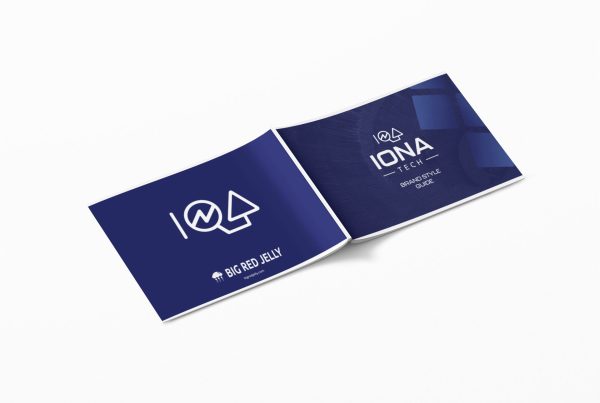The world around us is full of brands that will use every tool within their power to catch our attention and appeal to us. I was serving my dog a scoop of his personal favorite brand, his Wellness Core dog food when an element on the back of the packaging caught my eye. It was a definition for the word Kôr.
Kôr noun
-
Most vital or most important part
-
The Essence
The Wellness brand used that definition paired with the copy and design of their packaging to help tell their story. That story is that their Core dog food is the most vital or important part of your pet’s well-being. However, that definition got me thinking. What’s the “Core”, or most vital or important part of a brand?
The answer? A Brand Guide!
1. What is a brand guide?
A brand guide is one of the most essential documents for the success of your brand, and yet millions of companies don’t have one! A brand guide is the culmination of your brand strategy, core messaging, and visual identity to ensure brand consistency across all marketing channels. A good brand guide provides clear, universal guidance for everyone who uses your brand, both internally and externally.
Why does that matter?
A survey from Salsify in 2022 showed that 46% of surveyed consumers say they would pay more for brands they trust, and consistency in your brand identity is how you build and maintain that trust with your audience. It’s not just opinion, either! A Lucidpress study in 2019 showed that consistent presentation of a brand has been seen to increase revenue by 33%. That’s a lot of money that companies miss out on when they skip out on a clear brand guide to outlining a consistent presence.

2. What should be included in a brand guide?
Brand Story
Your brand story is the culmination of who you are as a company. This could be the story of how much your company has grown, how you started, and the vision for the future. It could be a specific moment in your company’s career that had a massive impact. Whatever it happens to be, your brand story is there to be just that, a story that gives your audience insight into your heart, soul, and purpose.
Brands don’t succeed unless they’re able to connect to their audience and show that they share similar values. In today’s world, people are bombarded with brands trying to sell them every day, so people are beginning to choose brands that they relate to. Think of your brand as a living, breathing person with a personality and values, and be transparent in its vision and purpose for being alive.
Internal Messaging
Establishing your core messaging is vital for your brand, as it helps lead the way for all other external communications and marketing that your brand will create. Without defining your brand’s direction, it will lack an identity or purpose for both your internal employees and external audience. In other words, your brand won’t have anything to connect to.
Internal branding typically includes items such as:
- Mission and Vision Statements
- Core Values
- Brand Positioning
- Brand Voice
These can be shared with your audience, but should not be created with the sole purpose of doing so. These are powerful statements that lay the foundation for who you are and how you communicate and connect with your audience and how you’re different from everyone else. These should be shared with and often reviewed internally with your employees, as this is what helps those within your company represent it as a brand.
Logo Guidelines
With any new brand-building project, you should receive an exhaustive responsive logo suite. This should include both layout and color variations of your logo that can be used in any use case.
Your brand guide should contain a section dedicated to this logo suite. This is information about the primary and alternative options, size, spacing, and color. These rules should clearly state when and how to use the logo to achieve the brand consistency you’re looking for.
Brand Color Palette
Colors are not a trivial part of your brand. With the right colors, your brand can emphasize who you are through color psychology. In other words, colors portray feeling, and you can influence how people feel when they look at your brand.
By defining your color palette, you can also look and feel consistent. This section of your brand guide should detail the meaning behind your colors and the guidelines for each hue. Be sure to outline the primary and secondary colors, as well as their HEX codes and RGB and CMYK values. This will help anyone who is using your brand to get the same colors every time.
If you are planning on getting promotional products or other external printing assets, consider having an official PANTONE color established for even more consistency.
Typography
Brand fonts should be used EVERYWHERE your brand is seen, including all brand marketing materials and your website. This section of your brand guide should include those chosen fonts, as well as their sizes, functions, and when to use them.
Establish a hierarchy of use that includes headers, subheaders, and body text.
Rules about text spacing, line weight, and alignment should be included as well when necessary.

Ready to build your own?
Have you collected all of the items throughout this article? Then you’re ready to create your brand guide and become a BRAND, not just a company.
The talented Brand team at Big Red Jelly can help you create and compile everything outlined here, taking you through our tried and true process for a fully fleshed out brand in only a few weeks, including a responsive logo suite, internal messaging, external messaging, color palette, and typography and creating a stunning new brand guide that’s unique to you and your brand.
Reach out to one of our experts to find out how we can build your brand from the ground up.







